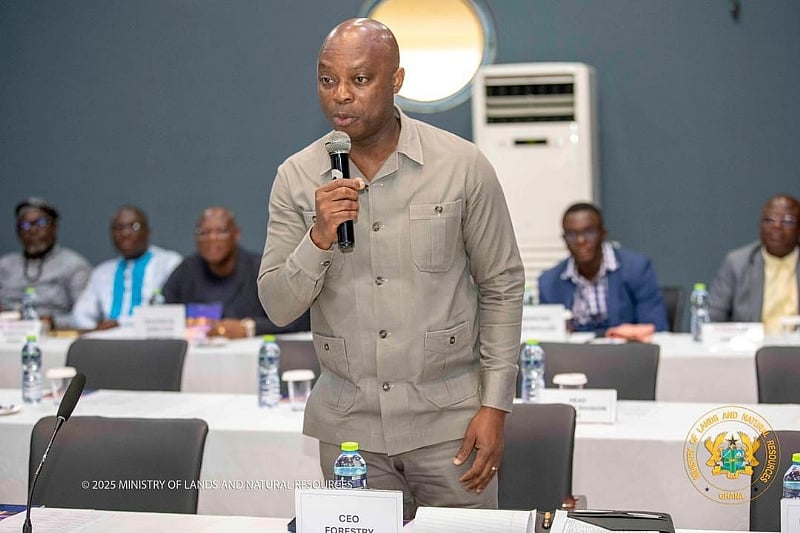The Forestry Commission of Ghana, under the leadership of Chief Executive Officer Dr. Hugh Brown, has announced the successful reclamation of the Asenayo Forest Reserve from illegal mining operations. This significant achievement, lauded as a testament to interagency collaboration, marks a crucial step in the ongoing fight against illegal mining and the protection of Ghana’s vital natural resources. The recovery of Asenayo, once heavily impacted by destructive mining activities, underscores the government’s commitment to preserving its forest reserves and water bodies, and follows the successful reclamation of seven other reserves. This systematic approach, integrating intelligence-led enforcement, community engagement, and ecological restoration, is being hailed as a model for sustainable natural resource governance.
The reclamation of Asenayo Forest Reserve signifies the near completion of a comprehensive effort to combat illegal mining within Ghana’s protected areas. Driven by the collaborative efforts of the Ministry of Lands and Natural Resources, the Forestry Commission, and the joint military-police task force, the initiative has targeted reserves previously overrun by illegal miners. The success in Asenayo demonstrates the effectiveness of the integrated strategy deployed by the government, which combines robust enforcement measures with community involvement and ecosystem restoration. This approach acknowledges the multifaceted nature of the challenge, addressing not only the immediate need to remove illegal miners but also the long-term goal of restoring ecological integrity and promoting sustainable resource management.
The Asenayo recovery reflects the government’s intensified dedication to forest protection. The comprehensive strategy employed in Asenayo and other reclaimed reserves emphasizes proactive, not reactive, measures to tackle illegal mining. By incorporating intelligence gathering and targeted enforcement, the initiative seeks to identify and disrupt illegal operations before significant environmental damage occurs. This forward-looking approach demonstrates a shift from solely reactive measures to a preventative strategy aimed at addressing the root causes of illegal mining and protecting these critical ecological zones.
The collaborative approach of the Ministry of Lands and Natural Resources, involving the Forestry Commission, military, and police forces, has been instrumental in the success achieved thus far. Interagency cooperation allows for a combined effort and shared resources, enhancing the overall effectiveness of the operations. This integrated strategy ensures a comprehensive response to the complexities of illegal mining, from enforcement and removal of illegal miners to community engagement and the crucial task of ecological restoration. By pooling resources and expertise, the interagency collaboration strengthens the government’s ability to combat illegal mining and protect Ghana’s natural heritage.
The reclamation of Asenayo and the other seven reserves represents a substantial victory in the battle against illegal mining. These successes bring the government closer to its overarching goal of total recovery and demonstrate its unwavering commitment to protecting its natural resources. With only one reserve remaining under illegal occupation, the Ministry of Lands and Natural Resources has affirmed its determination to reclaim this final target and ensure the lasting protection of all forest reserves from further encroachment and damage. This resolute stance sends a clear message that illegal mining activities will not be tolerated within protected areas and that the government is dedicated to preserving the country’s natural wealth for future generations.
The success in Asenayo and the other reclaimed reserves signifies a turning point in Ghana’s fight against illegal mining, offering a hopeful outlook for the future of the nation’s forests. The integrated reclamation strategy, encompassing intelligence, enforcement, community partnership, and restoration, provides a comprehensive framework for sustainable resource management and serves as a potent deterrent to future illegal activities. This comprehensive approach underscores the government’s commitment to not merely reclaiming territory but also to ensuring the long-term health and sustainability of Ghana’s precious forest ecosystems. This comprehensive approach serves as a model for other nations grappling with similar challenges and underscores the potential of collaborative, strategic action in protecting vital natural resources.


